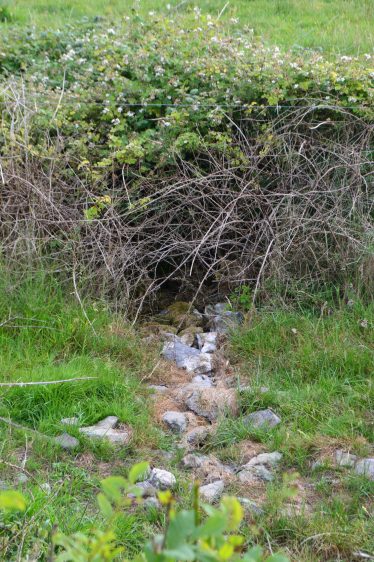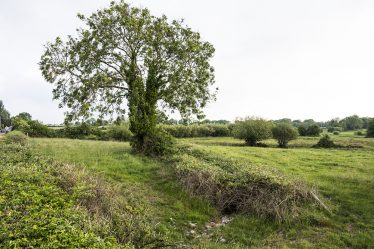Saint Senan's, known locally as Saint Fineen's or Finghín's, Drim




Townland: Drim, Doora
Description and of Holy Well and Landscape Setting
The well lies on the south side of the R460, about 4 kilometres from Quin village. It appears to be fed by a small stream coming from higher ground on the opposite side of the road. The well area, lying lower than road, is a little marshy. A large ash tree stands a few metres east of the tree but may not be a companion tree.
Saint and Feast Day Associated with Holy Well
The well is recorded as being associated with Saint Senan in the Ordnance Survey Letters of 1839. Locally the Holy Well is attributed to St. Finghin, who is the patron of Quin Village, a few miles to the east.
Saint Senan’s feast day is 8th March. There is no evidence of current veneration at the well, nor are there any votive offerings found there. Visitation to the well may have ceased in the early 19th century. The Ordnance Survey inspectors were unable to determine a feast day for Finghin when speaking to locals in the late 1830s.
Natural Heritage around the Holy Well
The well was dry at the time of the research visit, although there was evidence of a small stream flowing towards the mouth of the well. Some irises were present, indicating wet ground.
Heritage Attractions Nearby
The 15th century Franciscan Friary and the 13th century Saint Finghin’s Church are in Quin village, 4 kilometres to the east of the well site.
Additional Information
John Hogan, Quin Friary’s last monk is said to have hidden close to the holy well during penal times. He died in 1820 and is buried in the north east corner of the cloister walk. The monks appear to have had a house at Drim which they occupied between their many expulsions from the Friary.
Discover More…
Ordnance Survey Letters, Royal Irish Academy
Ordnance Survey Letters, Ask About Ireland
Record of Monuments and Places Number
RMP-CL034-12801
Surveyed by Michael Houlihan




No Comments
Add a comment about this page